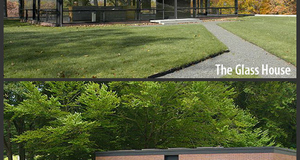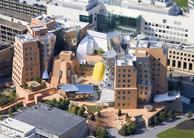Architectural Beauty as a Public Good Through the Lens of Ritzer and Kohn
By
2022, Vol. 14 No. 03 | pg. 1/1
IN THIS ARTICLE
KEYWORDS
AbstractAfter World War II, America’s baby boom and rapid migration into cities sparked a damaging housing crisis. This marked a turning point in architectural style: the rise of modernism. Modernism prioritizes function above all else and believes in the existence of a most efficient, most cost-effective housing blueprint. Hence, America rolled out planned housing developments by the masses with each community constructed in a near-identical fashion. This essay points to the consequential neglect of architectural beauty which is defined as a perfect reflection of the identity of a shared imaginative “community.” Due to the non-excludable and non-rivalrous nature of architectural beauty, the essay argues that it is a public good and, thus, should be accessible to all. By applying the perspectives of George Ritzer’s The McDonaldization of Society and Margaret Kohn’s Public Goods and Social Justice, the dialogue between these two authors explores why the government has an obligation to ensure the publicness of said good, with Kohn’s solidarism harbouring a particular emphasis on accessibility for the less affluent and Ritzer concentrating on controlling rationalization. Kohn provides reasoning as to why nonessential public goods, such as architectural beauty, still deserve government intervention while Ritzer demonstrates that rational, modernist architecture has undoubtedly contributed to resolving the post WWII housing crisis. Therefore, although a trade-off exists between the quantitative spread of housing and the architectural beauty of those communities, it is time to lean in favour of beauty. The emergence and rise of modernist architecture have dramatically impacted the ways in which American structures are designed and constructed. Above all, it emphasizes function; the form is to serve its functional purposes. As such, modernist architecture is known for a minimalist aesthetic including simple linear elements, neutral colour palettes, and little to no ornamentation. Heavily inspired by the emergence of scientific management, modernism also advocates for standardization and efficiency, championing the capacity of rational planning to produce the “one best way” of building (Guillén, 1997). Metal, concrete, glass, and steel became the primary construction materials since man-made materials could be prefabricated and were more durable than natural materials such as limestone and brick. As Professor Wendy Steiner puts it, “… modernism advocated purity and monofunctionality, attempting to manage disjunction and diversity either by suppressing or vilifying them” (Steiner, 2002, p. 65). This essay aims to apply George Ritzer’s analysis of the rationalized society to the governance of architectural beauty in America’s planned housing developments and subsequently respond through the lens of Margaret Kohn’s solidarist account. Conceptual Framework of Beauty as a Public GoodBeauty, when referring to sensory preferences such as a painting looking beautiful or a song sounding beautiful, is a highly subjective term, dependent on culture, geographical location, and time period amongst other factors. Thus, this essay builds off Glenn Parsons’ (2010) claim that beauty produces a feeling of perfection in its particular context. In regards to architectural beauty specifically, this would explain why a Gothic cathedral’s combination of space and light is beautiful because it evokes an incomparable religious awe, but the same Gothic style in a courtroom comes off as awkward; courtrooms are meant to be serious and procedural rather than spiritually inspiring (Parsons, 2010). Individuals can still disagree on what design is best suited for a given purpose, but collectively, neighbourhoods retain a shared imaginative “community.” How perfectly architecture exhibits the identity of this shared community is the beauty at hand.Based on existing literature surrounding architectural beauty, there appears to be a general consensus among academic research that architecture plays a crucial role in reflecting the identity of a community. The Islamic Azad University’s Department of Architecture published a paper about how architecture’s “unbreakable bond with… culture, values and behavior patterns of society” makes it a conveyor of a community’s identity; identity being a unified expression of a set of material, biological, psychological, and/or cultural signs that differentiate groups, individuals, or cultures from one another (Torabi & Brahman, 2013). For instance, architect Amos Rapoport (1969) writes about how different cultures have very different design systems; such is why the spatial organization of schools, houses, markets, and bathrooms greatly differ between Persian and American architecture. Building materials also play a crucial role in reflecting certain values; for example, gold and marble represent wealth and polish whereas wood exudes natural and warm characteristics (Torabi & Brahman, 2013). Additionally, architecture relies on context; Persepolis’ meaning is understood in relation to its surrounding space and if it is relocated to a different city such as Tokyo, it will lose its definition (Torabi & Brahman, 2013). Thus, throughout this essay, “architectural beauty” or “beautiful architecture” shall be defined as architecture that accurately reflects the identity of the community it represents such that it feels perfect. Beautiful architecture is a pure public good as it is both non-rivalrous and non-excludable. Architectural beauty is non-rivalrous, given that one individual – or even many individuals – looking at a beautiful structure does not inhibit another individual from simultaneously looking at the same structure. Even the visually impaired benefit, for their inability to perceive beautiful architecture does not diminish the increased psychological wellbeing of people who can see and whom they inevitably interact with (Parsons, 2010; Florida et al., 2011). In certain cases, architectural beauty can arguably be exclusive when buildings such as museums and certain famous structures have been commercialized to require a fee for entrance. However, as this essay focuses on planned housing developments, most beautiful architecture lies in the exterior design of houses, parks, and other community structures that all community members are free to observe, meaning that individuals ultimately cannot be excluded from accessing or intentionally deprived of architectural beauty. Therefore, architectural beauty is neither rivalrous nor excludable. Historical BackgroundIn a paper published by Sage Publications, Mauro Guillén (1997) notes a correlation between a country’s speed of industrialization and their adoption of modernist architecture. After World War I, Britain, the United States, and Spain experienced the quickest industrialization – i.e., adoption of assembly line practices, mass production, and large growth of manufacturing companies – and simultaneously saw a Gothic revival in their architecture (Guillén, 1997). By contrast, countries like Germany, Russia, and Italy experienced slower industrialization and a huge rise in modernism. Guillén proposes that in societies drastically impacted by industrialization, modernism became clumped into the overall industrial movement whereas slower industrialization allowed modernist architecture to evolve independently. After the Second World War, housing became one of the main social problems of the decade (Rowe, 2011). In industrialized nations, urban cities were utterly unprepared for the mass influxes of citizens that migrated to cities as well as the post-war baby boom, creating overcrowded and poor hygienic conditions (Wassenberg, 2018). It was then that modernist architectural planning exploded in popularity as a proposed solution to the housing crisis. The modernists believed that they could design the best functioning, most efficient neighbourhood and reproduce this blueprint by the masses, aided by the era’s improving technology and standardized labour-saving practices – they had faith in a “one size fits all” solution (Wassenberg, 2018). Most modernist projects were initially successful; however, overtime, many household types other than “standard families” emerged, increasing the diversity of living styles that the uniformity and repetition of modernist architecture could not address (Rowe, 2011). As many European countries experienced an unconstrained development of modernism that was independent from industrialization, European modernist architects wanted to make scientific management beautiful by reinterpreting it in aesthetic terms (Guillén, 1997). By contrast, in America, modernism was a tool to serve mass production (Guillén, 1997). Therefore, while there has been a general loss of architectural beauty in the West, America has experienced it more intensely, explaining why this essay will focus on this nation specifically. Characterization of Two PerspectivesGeorge RitzerIn The McDonaldization of Society, Ritzer (1983) delineates the rationalization of society – that is, a society emphasizing “efficiency, predictability, calculability, substitution of non-human for human technology, and control over uncertainty” (p. 100). This essay will concentrate specifically on how efficiency, calculability, and substitution of non-human for human technology negatively affects architectural beauty. Efficiency is about searching for the best means to achieve any given end, with ‘best’ generally referring to the largest quantity in the quickest amount of time while maintaining a level of quality that still makes the end desirable (Ritzer, 1983). Calculability places an emphasis on quantifiable measures, essentially prioritizing quantity over quality (Ritzer, 1983). Substitution of non-human technology refers to society’s inclination towards replacing human labour with machines whenever possible as machines are more predictable and controllable (Ritzer, 1983). Margaret KohnIn Kohn’s (2020) Public Goods and Social Justice, she explores the state provision of non-universal public goods; namely – collective consumption goods that are not preferred or enjoyed by all. She presents three existing accounts for state distribution of public goods: market failures, basic needs, and democracy. Market failure occurs when the market distribution of non-excludable and non-rivalrous goods creates free riding, causing highly beneficial goods to be under-produced (Kohn, 2020). While this classic type of market failure is absent in “commercial provision of recreational space” such as health clubs and private parks, the experience between private and public recreational space still differs (Kohn, 2020, p. 1106). In specific regards to parks, gated private parks lose public parks’ ability to force people to run up against a broad cross-section of society. Thus, market failure is also the “inability to provide a collective, inclusive, and diverse place of encounter” (Kohn, 2020, p. 1106). The basic needs theory asserts that state provision is justified when distributing basic necessities such as food, shelter, and healthcare (Kohn, 2020). However, its neutral stance on the understanding of the good life means that is useless for discussing the public provision of goods that appear to be discretionary (Kohn, 2020). The democracy theory attempts to fill in this gap by claiming that if the state should remain neutral about what is good, then the publicness of discretionary goods should be determined by the majority (Kohn, 2020). Kohn’s issues with this account are that it excludes minority preferences and assumes that the public versus private allocation of some non-essential good have no principled backing. Kohn provides said principled backing, particularly for public parks, through her solidarist account. It resembles the “merit goods” approach which states that the distribution of certain “intrinsically valuable” goods is socially recognized to be the responsibility of government subsidies because under the free market, they experience classic market failure; however, solidarism differs in claiming that providing discretionary goods for the public is not a choice but an obligation (Kohn, 2020, p. 1107). It emphasizes modern societies’ interdependence due to division of labour, resulting in social products rather than individual ones (Kohn, 2020). Kohn sees public parks as crucial to creating awareness of interdependence by exposing visitors to people from different walks of life whom they would otherwise be sheltered from (Kohn, 2020). Although the value of parks varies greatly among all people, they still indirectly relate with one another in the sharing of public space, forming an “imagined community” (Kohn, 2020, p. 1110). Hence, the affluent, by principle, have a quasi-contractual debt to society – especially to the less affluent – that they are required to repay by publicizing discretionary goods (Kohn, 2020). Ultimately, solidarism, and the approaches based on basic needs and market failures should collaborate to advocate for the state provision of certain non-universal goods for free while democratic decision-making should help prioritize the provision of different goods (Kohn, 2020). Governing Beauty as a Public GoodAssuming Ritzer’s perspective, architectural beauty is currently threatened by the increasing and continuous emphasis on efficiency, calculability, and substitution of non-human technology, leading to the America’s homogenous planned housing developments. Given that efficiency prioritizes function and speed, modern architecture follows suit with its motto “form follows function” (Duque, 2002). Modernism aims to create standardized housing developments that can be pre-planned, applied universally, and demolished when deemed useless (Strom, 2020). Although this creates easier, functional designs that can be built quickly, rational modernism’s globalizing tendencies portray indigenous and non-modern architecture as ‘bad’ and modern rational architecture as the sole good (Hewitt, 2011). As a result, the way communities vary in their history, culture, and values renders it impossible to rationally develop a housing blueprint that perfectly captures the essence of all communities; its capacity to be architecturally beautiful is limited. When individuals are surrounded by architecture that is ugly i.e., poorly reflect community identity, individuals internalize the negative emotions evoked by the external ugliness, resulting in higher rates of dissatisfaction, depression, and boredom (Nico Leonard, 2015). Calculability exacerbates the disregard for architectural beauty by focusing on how many buildings can be built rather than how beautiful the buildings are, evident in many rational projects such as Gropius, May, and Le Corbusier’s papers on the “minimum existence housing unit”: the smallest possible apartment that an average family could comfortably inhabit (Guillén, 1997, p. 692). They measured success by the number of houses they could fit into a neighbourhood rather than the architecture’s connection with community identity. Moreover, as architectural designs become increasingly simple and repeatable, non-human technology holds a greater presence in architecture where computers are able to copy past designs and create new similar ones (Meltzer, 2014). Model-based software development has grown in popularity as it can engage in an automated process of designing new target models based on a library of source models, reusable components, and transformation rules that have been inputted into the software (Zheng & Taylor, 2013). Consequently, the creative touch of individual architects is fading. Despite these harms of a rationalized society, Ritzer says it is still preferrable to the pre-rationalized way of life (Ritzer, 1983). After WWII, the mass rationalization of America’s planned housing developments no doubt lifted millions of citizens out of poverty, improved hygienic conditions, and largely solved overcrowding. Thus, rather than force all architects to revert to the pre-modern era, Ritzer would propose ways to control rationalization, such as having the state subsidize urban planning corporations and architectural firms that produce architecturally beautiful planned housing developments. This creates a rational incentive – namely, lower costs – for beauty. Furthermore, post-secondary architecture programs should mandate students to take a neuroaesthetics course so that architecture students recognize the psychological importance of considering beauty alongside function (Pearce et al., 2016). Additionally, he would likely approve of architectural conservation organizations that aim to preserve beautiful buildings and protect them from demolition (Jokilehto, 1989). Ritzer may highlight the British government’s latest proposals to their National Planning Policy Framework which aims to put a greater concentration on designing neighbourhoods based on local residents’ wishes. Local councils are asked to formulate their own, unique “local design code” as an outline for design standards that architects and planners must adapt to meet or else their designs will not be approved, preventing extreme calculability from taking charge (Ministry of Housing, Communities, & Local Government & The Rt Hon Robert Jenrick MP, 2021). The government is rationally incentivizing councils to sign up by providing the first 22 that do with an initial share of £1.5 million (Ministry of Housing, Communities, & Local Government & The Rt Hon Robert Jenrick MP, 2021). Moreover, to protect against rationalization’s frequent demolition practices, the government is urging communities to nominate historically or culturally significant architectural structures to their council’s local heritage list for preservation (Ministry of Housing, Communities, & Local Government & The Rt Hon Robert Jenrick MP, 2021). Assuming Kohn’s perspective, she may question Ritzer’s notion that rationalization and architectural beauty are completely incompatible. By extrapolating from her arguments pertaining to public parks, it appears that to Kohn, the foremost importance of architecture does lie in its functionality. The shared imaginative community that public parks create is extremely contingent on its publicness but not its architectural beauty – whether the park has swings, a basketball court, or a garden does not interfere with the fact that the park functions as an open public space for people to traverse through and spend time in. Teenagers will still go to their community’s park to meet with their friends even if it looks the same as all other parks. It is the people themselves that enable parks to reflect community identity and make architecture beautiful. However, Ritzer may remind Kohn that the beauty of a park can have huge implications on who chooses to access this public good. Parents would much rather bring their children to beautiful parks and runners are more likely to avoid ugly ones (Nico Leonard, 2015). Beautiful design clearly impacts the effectiveness of architecture’s ability to compel broad cross-sections of society to intersect. This is particularly true of housing developments where residents are forced to observe its architecture anytime they step out the door. Ones that beautifully capture community identity act as a constant reminder of solidarity by visually exemplifying the locale’s indirect connectivity with each other whereas architecturally ugly design alienates. There appears to be a trade-off, then. When architectural beauty is a main concern for housing development planners, it inevitably disrupts the speed at which neighbourhoods can be built. Since shelter fulfills the basic needs approach, it is an essential public good that should be prioritized over architectural beauty, a non-essential good. Thus, even if rationalization reduces the qualitative effectiveness of solidarity, its efficient spread of housing developments produces quantitatively more opportunities for solidarity to occur. However, over half a century after the post-war housing crisis, present America no longer has an extreme shortage of housing. There is now an opportunity to mend the damage that rational architecture has done to architectural beauty and Kohn would justify the state’s role in this through a few reasons. Firstly, in capitalist America, architectural beauty is evidently underproduced by the free market and the wealthy possess a disproportionate ability to reside in expensive and beautiful planned housing developments (Hewitt, 2011). Kohn would say that one should not have to pay more just to access architectural beauty and, due to society’s interdependence, the wealthy are obligated to help make architectural beauty a public good, either through donations or paying higher taxes. The modernist may argue that interior design can compensate for rational architecture’s loss of beauty (Steiner, 2002, p. 61-2); however, this simply transforms architectural beauty into a private good, defeating the purpose of increasing the accessibility of goods for the less affluent populous. Interior design is exclusive only to whoever is able to enter that building. This is particularly true for planned housing developments where homeowners only have the right to freely enter their own property. Hence, at large, interior design’s purpose is to reflect the identity of individual residents, not the community. Comparatively, the exterior of architecture is observed by all and it must coordinate with the appearance of other neighbourhood structures (Torabi & Brahman, 2013), making each building a contributor to community identity. The conversation ends, then, with a base consensus between Kohn and Ritzer: the state is justified in subsidizing planned housing projects that consider architectural beauty, but Kohn extends it a step further by placing a particular emphasis on projects intended for less-affluent communities. ConclusionBy examining architectural beauty through a dialogue between Ritzer’s rationalization of society and Kohn’s solidarism, both Ritzer and Kohn would support the government subsidization of architectural beauty, with Kohn placing greater focus on the less affluent. Additionally, Ritzer would call for neuroaesthetics courses in post-secondary architecture programs and the reduction of building demolition while Kohn believes the affluent must repay their societal debt through taxes or donations. However, readers should further consider the government’s suitability as a primary funder. Nazi and Soviet communist leadership have both utilized architecture for political means (Billiani & Pennacchietti, 2019); hence, it is important to think about accountability measures that can prevent current governments from subsidizing developments they deem beautiful. This essay shall conclude with a quote from architect Gropius: “The assumption that the industrialization of housing construction entails a decline in aesthetic values is erroneous. On the contrary, the standardization of structural elements will have the wholesome result of lending a common character to new residential buildings and neighbourhoods…Well-manufactured materials and clear, simple design of these mass-produced elements will guarantee the unified ‘beauty’ of the resulting buildings” (Guillén, 1997, p. 698). If architectural beauty is to reflect a community’s identity as perfectly as possible, then perhaps rationalized architecture can indeed be beautiful when the purpose is to be machine-like, such as a community of factory workers. But whether modernists are able to guarantee beauty in planned housing developments is quite a different story. ReferencesBilliani, F., & Pennacchietti, L. (2019). Fascism and Architecture. In F. Billiani & L. Pennacchietti (Eds.), Architecture and the Novel under the Italian Fascist Regime (pp. 61–95). Springer International Publishing. https://doi.org/10.1007/978-3-030-19428-4_4 Duque, E. (2002, July 6). ‘House Form and Culture’ revisited: A subaltern critique of Rapoport’s reading of vernacular. Third International Symposium of the Centre for Asian and Middle Eastern Studies, CAMEA, University of Adelaide, Australia. Florida, R., Mellander, C., & Stolarick, K. (2011). Beautiful Places: The Role of Perceived Aesthetic Beauty in Community Satisfaction. Regional Studies, 45(1), 33–48. https://doi.org/10.1080/00343404.2010.486784 Guillén, M. F. (1997). Scientific Management’s Lost Aesthetic: Architecture, Organization, and the Taylorized Beauty of the Mechanical. Administrative Science Quarterly, 42(4), 682–715. https://doi.org/10.2307/2393654 Hewitt, A. (2011). Privatizing the public: Three rhetorics of art’s public good in ‘Third Way’ cultural policy. Art & the Public Sphere, 1(1), 19–36. https://doi.org/10.1386/aps.1.1.19_1 Jokilehto, J. I. (1989). A history of architectural conservation: The contribution of English, French, German and Italian thought towards an international approach to the conservation of cultural property. https://elibrary.ru/item.asp?id=6842256 Kohn, M. (2020). Public Goods and Social Justice. Perspectives on Politics, 18(4), 1104–1117. https://doi.org/10.1017/S1537592719004614 Meltzer, T. (2014, June 15). Robot doctors, online lawyers and automated architects: The future of the professions? The Guardian, 8. Ministry of Housing, Communities, & Local Government, & The Rt Hon Robert Jenrick MP. (2021, January 30). All new developments must meet local standards of beauty, quality and design under new rules. GOV.UK. https://www.gov.uk/government/news/all-new-developments-must-meet-local-standards-of-beauty-quality-and-design-under-new-rules Nico Leonard. (2015, December 3). Why Beauty Matters? (Por que a beleza importa?) Roger Scruton. https://www.youtube.com/watch?v=bHw4MMEnmpc Parsons, G. (2010). Beauty and Public Policy. Commission for Architecture and the Built Environment. https://www.academia.edu/1140538/Beauty_and_Public_Policy Pearce, M. T., Zaidel, D. W., Vartanian, O., Skov, M., Leder, H., Chatterjee, A., & Nadal, M. (2016). Neuroaesthetics: The Cognitive Neuroscience of Aesthetic Experience. Perspectives on Psychological Science: A Journal of the Association for Psychological Science, 11(2), 265–279. https://doi.org/10.1177/1745691615621274 Ritzer, G. (1983). The “McDonaldization” of Society. Journal of American Culture, 6(1), 100–107. https://doi.org/10.1111/j.1542-734X.1983.0601_100.x Rowe, H. A. (2011). The Rise and Fall of Modernist Architecture. Inquiries Journal, 3(04). http://www.inquiriesjournal.com/articles/1687/the-rise-and-fall-of-modernist-architecture Steiner, W. (2002). Venus in Exile: The Rejection of Beauty in Twentieth-Century Art. University of Chicago Press. Strom, K. A. (2020, April 29). Modern Architecture Is Shoddy As Well As Ugly. National Vanguard. https://nationalvanguard.org/2020/04/modern-architecture-is-shoddy-as-well-as-ugly/ Torabi, Z., & Brahman, S. (2013). Effective Factors in Shaping the Identity of Architecture. Middle-East Journal of Scientific Research, 15(1), 8. https://doi.org/10.5829/idosi.mejsr.2013.15.1.2357 Wassenberg, F. (2018). Beyond an Ugly Appearance: Understanding the Physical Design and Built Environment of Large Housing Estates. In D. B. Hess, T. Tammaru, & M. van Ham (Eds.), Housing Estates in Europe: Poverty, Ethnic Segregation and Policy Challenges (pp. 35–55). Springer International Publishing. https://doi.org/10.1007/978-3-319-92813-5_2 Zheng, Y., & Taylor, R. N. (2013). A classification and rationalization of model-based software development. Software & Systems Modeling, 12(4), 669–678. https://doi.org/10.1007/s10270-013-0355-3 Suggested Reading from Inquiries Journal
Inquiries Journal provides undergraduate and graduate students around the world a platform for the wide dissemination of academic work over a range of core disciplines. Representing the work of students from hundreds of institutions around the globe, Inquiries Journal's large database of academic articles is completely free. Learn more | Blog | Submit Latest in Architecture |











